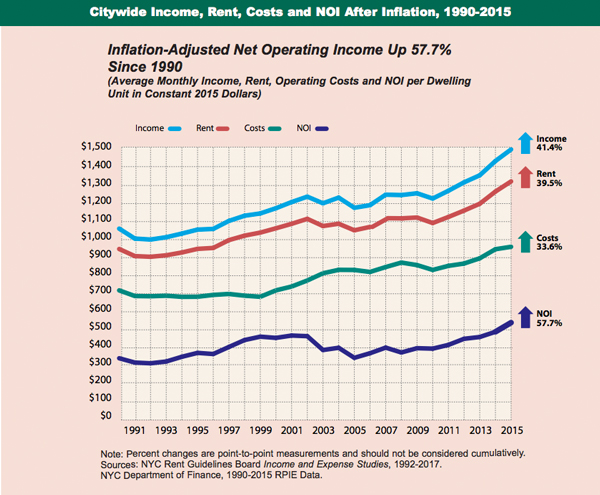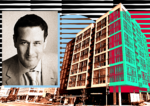Trending
Do landlords make money under rent stabilization? Depends whom you ask
A recent study shows a 10.8% increase in NOI, but some multifamily landlords contest the data

If you believe the Rent Guidelines Board, it’s a great time to be a landlord of rent-stabilized apartments. The RBG’s latest report, released Thursday, said that net operating income in buildings with stabilized apartments increased nearly 11 percent from 2014 to 2015, the highest recorded increase since 1997 to 1998.
But the NOI figures — which measures the difference between a building’s income and expenses, submitted annually by most landlords to the Department of Finance — and the study’s methodology have been criticized by landlords, who say they don’t account for major expenses.
“In the past and in the way the reports are written, NOI is used as a proxy for profit,” said Patrick Siconolfi, executive director of the Community Housing Improvement Program, in his testimony on behalf of owners last April. “It’s not, and this is a very serious misunderstanding,” he added. “It’s not the cost of delivering a unit of housing to the people of this city.”
Siconolfi and other multifamily landlords point out that because the NOI figures do not take into account a building’s debt service or the expenses of capital investments, they do not accurately represent the cost of owning buildings with rent-stabilized units.
The RGB, whose members are appointed by Mayor Bill de Blasio, uses the NOI calculation, among other data points, to set allowed rent increases for one- and two-year leases for roughly half of the city’s rental apartments. The annual allowance is one of the main ways landlords can increase rents for rent-stabilized tenants.
Joseph Strasburg, president of the landlord group Rent Stabilization Association, expressed his concern with the RGB’s report. “The fix is in,” he said in a statement Thursday. “The RGB’s numbers defy logic.”
Others say the report produced by the RGB is pretty fair. Barring further transparency from building owners, the report “is about as precise a measure of the relative increase in the income stream as you can possibly get,” according to Tim Collins, partner at Collins, Dobkin & Miller and the former executive director of the RGB.
Collins says the report demonstrates that owning rent-stabilized apartments has been profitable for landlords, though many landlords contest that claim. Since 1990, the earliest year data is available, NOI has increased 57.7 percent, with Brooklyn seeing the largest increase at 97 percent, the report notes.
At the same time, the number of “distressed” properties with stabilized units – buildings where expenses exceeded income – reached its lowest point since 1990 at 5.4 percent, according to the RGB.
“The balance that is being stricken here is decisively in favor of owners and has caused great harm to tenants,” Collins said.
In the last two years, the RGB has frozen rents on stabilized one-year leases, much to the ire of the RSA, which sued to reverse last year’s ruling. Earlier this week, a judge upheld the rent freeze.




